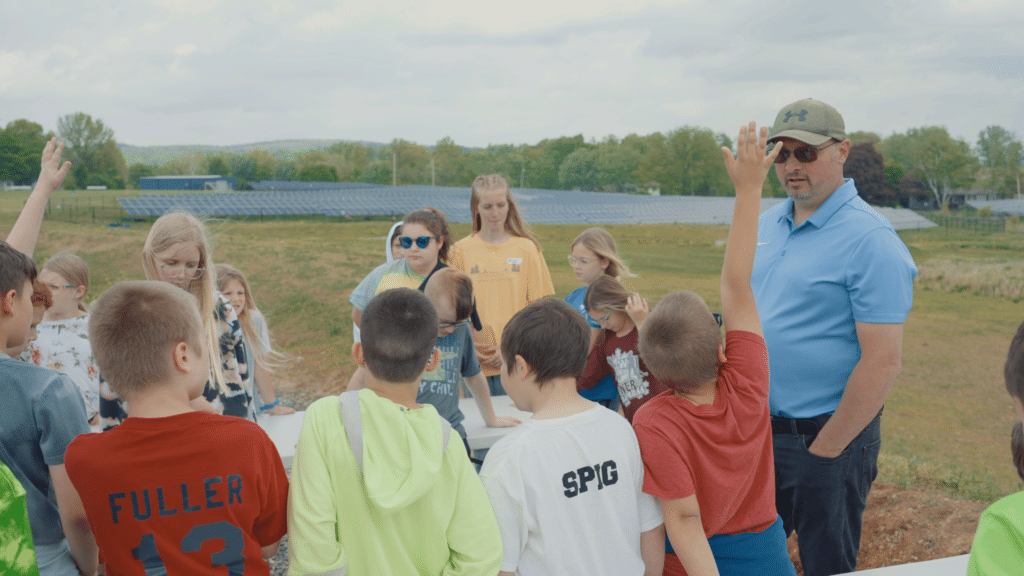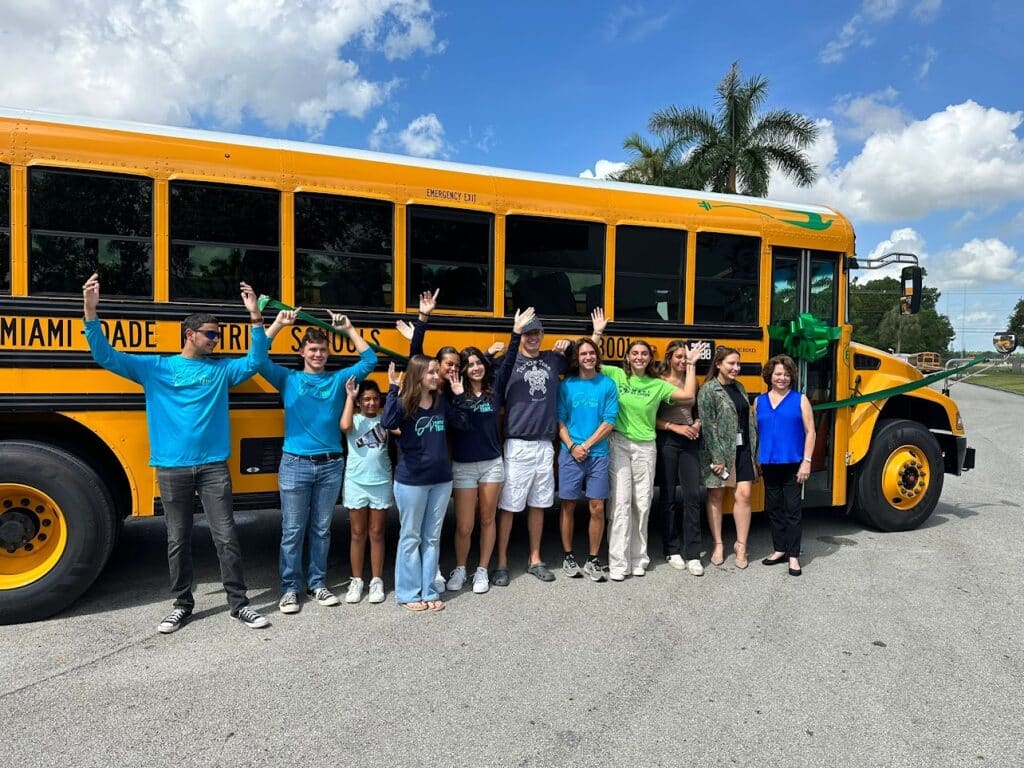An important part of Generation180’s Solar for All Schools campaign involves amplifying the successful work happening in communities around the country. This guest blog post comes to us from Amanda Schienebeck, program manager at the Midwest Renewable Energy Association, a nonprofit that’s been promoting clean energy, energy efficiency, and sustainable living through education and demonstration for thirty years.
Despite a less-than-ideal solar policy climate, Wisconsin schools are still going solar. In recent years, Wisconsin solar school campaigns have been led by student groups, school board members, and community solar champions. These campaigns have been motivated by school district renewable energy resolutions, financial savings, as well as environmental considerations. There are many pathways to solar, with each project being a unique experience specific to a district’s needs and motivations. Two recent Wisconsin success stories highlight the varied approaches that can lead to a successful solar installation.
Merton Community School District

The Merton Community School District is a 4K-8 grade public school district serving roughly 900 students in two schools: Merton Primary School and Merton Intermediate School. Until the state of Wisconsin changed the minimum per pupil revenue limit, Merton Community School District was the lowest per-pupil spending district in Waukesha County. With declining enrollment, they saw that their revenue limit continued to decline. At this point, they began seeking ways to save money, especially in energy as this continued to be a “fixed cost” regardless of enrollment.
In the spring 2018, a school board member was pursuing solar energy for their home and brought the idea of solar PV to the district as a means to potentially save on operating expenses. The School Board and Village Hall met several times to run numbers and build support through the winter of 2018. They were encouraged by early technical calculations from SunVest which showed great potential. The district formally went to bid in March 2019 for a 389 kW DC system to be split between both Merton Primary and Merton Intermediate. SunVest was awarded the contract and by December of that year, the system was commissioned and online.
The entire system is projected to produce almost two-thirds of the district’s energy needs, resulting in an average electricity savings of $70,000 per year for the system’s 30-year life. To help fund this project, they received an in-kind module donation for a portion of the system through MREA’s Solar on Schools program and a $68,000 RECIP Grant through Focus on Energy, together totaling over $100,000 in incentives. The remaining balance was paid through district dollars as well as a low-interest, ten-year loan. The payback period is anticipated to be no more than eight years.
The Merton Community School District invested in solar primarily as a way to continue to save energy with the significant added benefit of contributing to a cleaner environment. The district Superintendent, Ronald Russ was exceptionally pleased with their decision to go solar, stating, “Our entire experience from start to finish was fantastic. School districts need to, at a minimum, pursue the opportunity that solar power might afford their district. After we looked at grants, the opportunity to create our own power, and the very quick return on investment, [solar] was something we could not ignore.”
Madison West High School

Madison West High School students and staff continue to be passionately motivated to reduce West’s carbon footprint. West High School’s solar journey began as a student-led effort in 2017. From June 2017 through 2019, the West High Green Club raised over $89,000 from staff, students, parents, community members, the Madison Community Foundation, and other local foundations and businesses to support a West High solar installation. Charles Hua, West 2018 Alumni and former West Green Club President elaborated on the importance of the project, stating, “As one of the largest youth-led sustainability efforts in Wisconsin, this clean energy initiative…will provide students with hands-on learning opportunities in a growing clean energy job market, generate savings in electricity costs that will save taxpayers money, and reduce the school’s carbon footprint”
After completing a necessary roof replacement on West’s flat gym room, their school district went out to bid. The winning bidder, Westphal Electric, installed the 125 kW DC/95 kW AC system this past September for a total cost of around $170,000. In addition to West Green Club’s fundraising efforts, other significant funding sources included a Solar on Schools in-kind module grant of 50 kW and a $20,000 grant from the Left Coast Fund’s Solar Moonshot Program. The remaining balance was paid through existing operating budgets.
The system is anticipated to produce nearly 135 megawatt-hours every year, representing roughly 5.5% of the school’s annual energy needs, saving the district $13,861 annually and $415,830 over the 30-year lifetime of the system. The system will additionally include a comprehensive monitoring system and kiosk which will help provide students opportunities to interact with the PV system in their Science, Technology, Engineering, Art & Math (STEAM) classes.
The high school’s district, Madison Metropolitan School District, has made clean energy a priority, setting hard commitments to reach 50% of all operational energy needs with renewable energy by 2030, 75% by 2035, and 100% by 2040. On November 3rd, Madison voters approved an operating and facilities referendum for the district, which included $2 million specifically for environmental sustainability projects. The district aspires to be a place where all students and staff will eventually be able to work and study in a carbon-free setting.
The Wisconsin Solar on Schools Initiative
The Midwest Renewable Energy Association, in partnership with the Couillard Solar Foundation, developed the Wisconsin Solar on Schools initiative to help bridge the knowledge and experience gap that often limits schools from pursing solar PV systems. The Solar on Schools Resource Center houses a compilation of Wisconsin solar school case studies, RFP and other templates, guiding documents, finance modeling tools, expert-presented videos, a Wisconsin solar school peer network, and more to help schools’ Solar Planning Teams develop and execute a solar project. Additionally, to help lower the upfront cost of a solar installation, Solar on Schools provides an in-kind grant to Wisconsin schools in the form of a solar panel donation. Each grant is valued up to $20,000 with grants being awarded per school building installing solar.
Solar on schools is the kind of everyone-wins clean energy solution that communities all over the country need to discover and deploy as rapidly as possible. What’s needed now is this exact kind of work: awareness, education, and assistance in overcoming the inertia that keeps many schools unable to access the financial, educational, and community benefits of solar.














